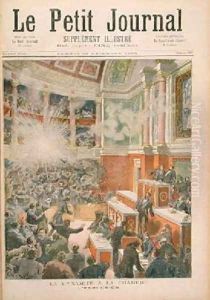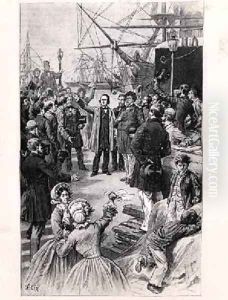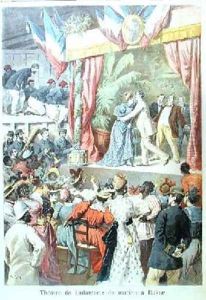Frederic-Theodore Lix Paintings
Frédéric-Théodore Lix, born on December 23, 1830, in Strasbourg, France, was a distinguished French painter and illustrator, known for his contributions to the world of art during the 19th century. Lix's early years were spent in the Alsace region, a place known for its rich artistic heritage, which undoubtedly influenced his path towards becoming an artist. His initial training was rooted in the traditions of French academic painting, but over time, he developed a style that was distinctly his own, showcasing a blend of realism and romantic sensibility.
Lix's career took a significant turn when he moved to Paris, the art capital of the world at that time. In Paris, he became involved with the thriving artistic community, contributing to various publications and projects. He gained recognition for his detailed illustrations in magazines and books, which were highly regarded for their precision and creativity. Lix had a unique ability to capture the essence of his subjects, whether he was working on portraits, historical scenes, or illustrations for literary works. His illustrations often featured scenes from popular novels of the day, bringing the characters and stories to life in a way that was both vivid and engaging.
Throughout his career, Frédéric-Théodore Lix exhibited his works at several prestigious venues, including the Paris Salon, where he received positive critical acclaim. His paintings and illustrations reflected not only his mastery of technique but also his deep interest in history and literature. Lix's contributions to the art world extended beyond his own creations; he was also involved in the artistic education of others, sharing his knowledge and skills with upcoming artists.
Despite his success, Lix remained relatively modest about his achievements, focusing instead on the quality and impact of his work. He was deeply committed to his art, continually exploring new techniques and subjects. Unfortunately, details about his personal life are scarce, as Lix tended to keep his private affairs out of the public eye. Frédéric-Théodore Lix passed away on October 12, 1897, in Paris, leaving behind a legacy that continues to be appreciated by art historians and enthusiasts alike. His body of work remains a testament to his talent and his contribution to the rich tapestry of French art in the 19th century.









































